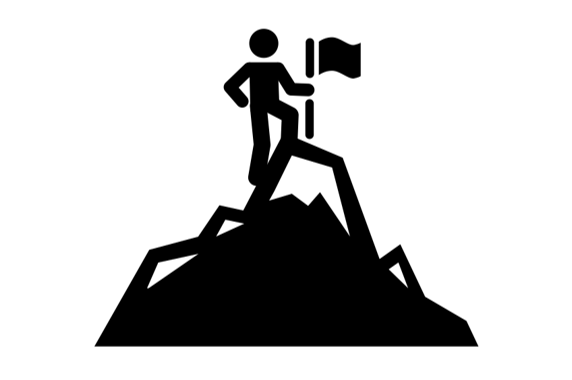How to become a Baker Scholar
/George Fisher Baker (1840-1931), the first major benefactor of Harvard Business School and namesake of the Baker Scholars
Case method classes in business school are unlike any other academic environment one will encounter. They require diligent preparation, excellent communication skills, and the ability to quickly analyze an evolving business problem in front of your peers. Class participation at many case method schools account for half of one’s grade. That’s the situation at Harvard Business School, where even though there is an official policy of grade non-disclosure, there is stiff competition for top marks.
At the conclusion of each course, students are assigned one of four grades designated as Category I, II, III, and IV.
Category I - given to the top 15-25% of students
Category II - given to the next 65-75% in a section. The actual number of Category II grades is subject to the number of Category I grades assigned.
Category III - given to the lowest-performing 10% of students in an elective curriculum course section.
Category IV - seldom assigned; designates failure of achievement and/or commitment and, therefore, failure to meet minimum standards of the course. If Category IV is used in a course, the combined number of students who receive Categories III and IV must equal the lowest 10% of the elective course section.
Those whose accumulation of “Net Category I” grades (i.e. the sum of their “I”s minus the sum of their “III”s and "IV"s) puts them in the top 5% of their class (over both years) earn the distinction of “Baker Scholar,” an honor named in memory of George F. Baker the "Dean of American Banking" who literally built HBS. Those who receive 5 or more “IIIs” face suspension from the program pending a review by the academic board (something called “hitting the screen”).
What steps can you take to make Baker Scholar and avoid hitting the screen?
1. Invest in your team.
Case method schools often assign students to discussion groups to analyze the case before the class. See our article on how to get the most of your Discussion Group here. These people are not there to merely suck up an hour of time you might otherwise spend sleeping – they are there to make you look good by challenging your understanding, assumptions, and analysis private before your classmates will attack them in public. This really only works if you foster trust, cooperation, and reciprocity among your discussion group, so before you get to work, get to know them first and foster the comradery you would want in a high-performing team.
2. Work smarter with “Case Captains”.
Read our article on that system here. Until you get really good at preparing cases they take 2-3 hours each to read, analyze, and write-up. That means that you’ll need to prepare 6-9 hours in advance of a three-case, easily sucking up any time that you might otherwise spend on other productive activities such as networking and recruiting. By using Case Captains, you can free up time on nights when you’re not on duty to attend social events to keep you sane, and recruiting events to keep you employed. Plus, if something happens and you’re not able to read the case, the Case Captain system throws you a lifeline to see participate in class.
3. Enlist a feedback buddy.
It’s really hard to be on the dance floor and to visualize yourself from the balcony at the same time. Likewise, it’s very difficult to accurately assess how you come across with your comments in class and what you need to improve. That’s why you should enlist a feedback buddy to keep special notes on the things you say. Things to have them look for include (1) the logical flow of your comment (was it easy to follow?), (2) your volume (could you be heard?), (3) its relevancy (did it fit in with the flow of the conversation or did it take the class on a tangent?), (4) the reaction of the professor and the class (positive or negative?), (5) any public speaking ticks to correct (you’re practicing a skill when you speak in public, practice it correctly!)
4. Keep a comment log.
Related to the above. Note on a I-III scale how well you think you did with your comment. This will give you a sense of how well you think you should be doing going into mid-term feedback and will help you understand where you need to invest your time to improve your grades. Noting when you speak in class will also tell you when you are due for a comment. When you’re overdue (i.e. it’s been more than three classes since your last one) you might want to start expecting a cold call. Having air-tight analysis pre-prepared in such a situation will make you look like a rockstar, but you’ll probably only be able to do that when you know the cold call is coming!
5. No case-facts or chip-shots
Every comment you make in class is graded. Each one is assigned a potential maximum value based on its level of difficulty (think of the way gymnastics and diving are scored by “degree of difficulty” in the Olympics). Questions where the answer is a case fact are by their nature incredibly easy. The best you can score by answering such a "chip-shot" flawlessly is a low “II.” If you mess it up, you’re in for a low “III”. Professors specifically ask these questions for students who are extremely nervous or under-prepared so that they can get their participation grade and get back out of the conversation. If you’re hoping to do anything more than not fail out of the school, you should avoid these questions at all costs.
6. Don’t speak in the first 30 minutes of class.
Related to the above. This is where all the case-fact questions are asked. The questions with a level of difficulty in the “I” range come usually at the two-thirds or three-quarters mark.
7. Quantity has a quality.
Every professor will say that the quality of your comments matter more than the quantity. However, after a certain point, quantity achieves a quality all its own. This happens for a couple reasons. First, faculty work to balance the airtime between students, so if you’re always speaking, the professor won’t want to waste a (dreaded) cold call, when they can use that to instead draw quieter students into the conversation. Second, and related, if you know that you won’t be cold called, you won’t have to play defense by answering chip-shots and case-fact questions. This gives you the freedom to only raise your hand to speak when you have a truly great comment. Last, while faculty say that quality is much more important than quantity, quantity is much easier to measure and consequently has greater weight for grading purposes.
8. Dig past the obvious answer
Most cases are meant to teach an incremental topic or framework. You know that the finance class on using comparable companies to calculate the WACC will involve calculations of comparable companies’ Beta. Don’t be content just calculating the other Betas; chances are all of the other smart kids calculated it too. Instead, ask one question deeper. Something like, are these even the right comparables? What do their Betas tell me about the strength of their firms? What does this WACC tell me I should invest in?
9. Make one point and make it well.
Comments with one thesis are easier to execute and easier for the class to follow. Complex comments referencing five points made over the past 30 minutes disrupt the flow and won’t be appreciated.
10. Erect signposts.
"Signposting" is the act of providing meta-structure to your comment in order to aid in its understanding. Example, “I disagree that the CEO should fire her CFO for three reasons. The first reason is that…”. This will help the class understand the journey that your comment is going to take them on, as well as then they can expect it to be over.
11. Let overripe comments go
Every comment has a moment in the case conversation. When the moment for your comment comes and goes, let it pass. Saying it anyway will disrupt the flow of the conversation and make it look like you were not listening to your classmates (i.e. being disrespectful). There is nothing more self-denying and zen than sitting on a comment you were sure would score a home run after your team has taken the field again.
12. Visit office hours.
Professors are people too and they appreciate getting to know you outside of class. Making one or two appearances shows your interest in their subject, and can provide great opportunities to ask questions that you never got to in class. Plus, professors can be valuable assets after graduation and visiting with them can really boost your professional network.















